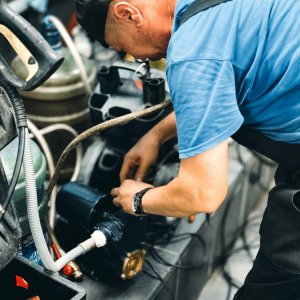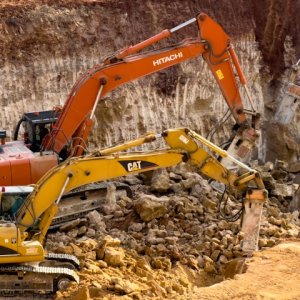TecProMin: Standardized Sampling for Total Confidence

STORY INLINE POST
Q: How do TecProMin’s sampling systems fit into its product portfolio?
A: We have our own business lines, resulting from our own engineering, knowhow and design. Prominent within those lines are our sampling systems. We do not sell “of the shelf” equipment; rather, we provide and integral technological solution system. Systems are made up of several components. Therefore, we have added technological value to our portfolio with some the products of the companies we represent or have joint venture agreements with. We integrate these solutions and produce a complete package. Each of our engineering and technological solutions are tailored to our clients’ needs.
Q: What issue do your sampling systems address?
A: The main problem our sampling systems solve is common to all mining operations in the world: metallurgical accounting, commonly known as metallurgical balance. In a financial institution, inventories are carried out to know precisely what resources are coming in and going out, so that when a balance is presented, the net balance is zero. The same applies to mining. In this case, the main factor is the commodity that the operation produces: copper or silver, for example.
The company needs to know within a reasonable degree of accuracy, what amount of the commodity enters the processing plant, how much will be processed and how much is lost during that process. If this metallurgical accounting is to be representative of reality, it has to be done by means of a sampling system that is as much as representative as possible. The quality in terms of representativeness of the sample that is taken to the laboratory for analysis has to be as high as possible. A poor sample, statistically-wise, obscures reality. For instance, if the lot has 2 percent copper, but the sampling system is not adequate, the laboratory can conclude that there is 0 percent copper. Of course, the sample is dependent on other factors, like chemical analysis, but if the sample is not statistically representative, the whole process becomes vitiated.
Q: What are the key requirements that TecProMin’s systems fulfil and why are they important?
A: Among other requirements, the sample must be equiprobabilistic. This means the probability of the sample that is taken from a lot has to be representative of the actual lot. To guarantee that, sampling systems have to comply with a series of technical standards that are regulated internationally, as well as updated sampling theory. Our sampling systems comply with these standards and with all statistical best practices, including Pierre Gy´s modern theory of sampling.
The process can be understood as a black box, where you need to know the inputs and outputs precisely, so the metallurgical balance makes sense. When a mineral producer sells its product to a client, the former has to know exactly how much valuable content is being sold. To do that, a proper sampling is required. The seller, who may be a copper producer in Mexico, may argue as an example, that his product has 30 percent of a value metal content. But the buyer, who can be a smelter in Japan, will also take a sample. If that sample says that there is 29 percent copper content in the product, then the divergence must be discussed. The first point for clearing the matter up will be the sampling method used. If any of the two parties does not have an auditable method — one that complies with all requirements, standards and theory— then it will not be able to argue the case and will probably lose in the transaction.
Q: At what crucial points in the process should TecProMin’s sampling systems be installed?
A: There are three key points where sampling systems are installed: input, output and losses (tailings). In a mineral beneficiation process plant, mineral ore enters, and after its metallurgical process exits in the form of a concentrate, a large part of the material fed is discarded as tailings, that has almost no economic value, but it carries small contents of the economic commodity being processed, hence is important to keep a precise assessment of its content to achieve a good metallurgical balance, and estimate the complete process recovery. As a general rule, these are the main three points. But processes can be broken down into subprocesses and it is useful to keep a metallurgical balance there, too. Furthermore, miners produce more than one commodity: polymetallic mines are common in Mexico. Each specific commodity needs a specific process and a corresponding sampling system.
Q: How integrated to automation and Industry 4.0 are your sampling systems?
A: Our sampling systems are completely automated to reduce human error as much as possible. The sample must be taken at a certain frequency, the volume has to be stable and must be safely transported to the lab. Our systems guarantee that because they are controlled by a central Programmable Logic Controller that execute all functions and regulates all variables. With respect to Industry 4.0, we have systems that allow the user to monitor remotely variable behavior. The user can then act upon any variable that is being read from the user’s device. Of course, these systems have to be properly safeguarded. Only highly trained technicians can manipulate them without spoiling the sampling representativity. Applications include real-time communication between a shipment facility located in Guaymas and a processing plant located in the Sonoran Desert.
Q: What success story in Mexico exemplifies TecProMin’s added value?
A: Santa Barbara was the last sampling system we developed in the country. For a long time, Grupo México did not have an optimal metallurgical balance at that operation. The measurement bias was considerable. We came in and defined that bias by means of statistical methods. We installed our systems, which have been running for a few months. Already, the client has fine-tuned the degree of certainty in its metallurgical balance. From a bias of 12 or 15 percent, it is now down to 5 percent. The concentrate the client was producing was more valuable than thought, and its losses were not properly quantified. That translates into money, as that plant processes several thousands of tons per day.
|
TecProMin was founded in January 1984 in the city of Santiago de Chile to serve as a specialized representative of foreign suppliers of mineral processing equipment, chemical reagents and other inputs for the exclusive use of minerals. |








 By Alejandro Ehrenberg | Journalist and Industry Analyst -
Tue, 08/11/2020 - 15:40
By Alejandro Ehrenberg | Journalist and Industry Analyst -
Tue, 08/11/2020 - 15:40

















